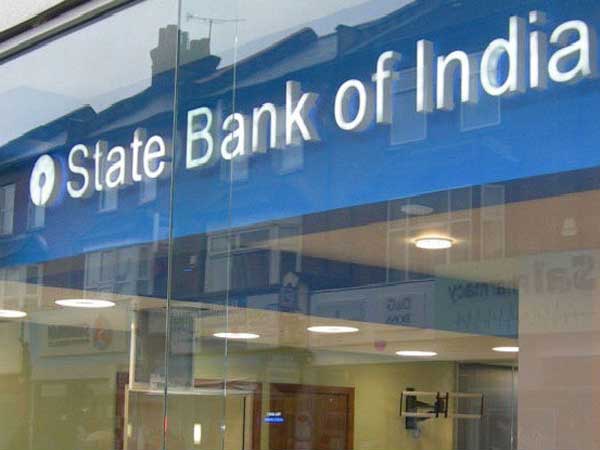A lot of the stocks which are moving up today are due to retail investment buying and speculative activity in the F&O market. We do not know how long it will go on. For Bajaj Finance to sustain these valuations, they need to grow at 40-50% continuously for the next four, five years in an economy where overall credit growth rate is 5-6%, says Sandip Sabharwal, analyst, asksandipsabharwal.com.
Bajaj Finance is becoming a platform company. It may become a front-ended platform company but the back-end would still be risk management, the NBFC business and the lending business. That is my view. Do you agree with it?
Yes. The overall technology edge is overestimated these days in my view because everyone has that technology now. Five years back, the technological edge was a story. Now it is more about innovation, how you sell your story and how you grow overall.
A lot of people talk about Bajaj Finance transformation. They are setting up all clients and all services together. But most of the banks are already doing that. I do not think that is a technological edge. I think the technological edge now is what you do and the stories will depend on how well you can execute those things.
Other than the big overhang of credit card issuances getting lifted from HDFC Bank, is there any reason to try and reallocate between ICICI Bank and HDFC Bank now?
Not so much. We need to remember that the last selloff which started in HDFC Bank was not related to the credit card, it was related to the spike in the NPAs which they saw in the last quarter and their asset quality is converging towards that of many of the other private sector banks. The credit card issue was an older one and that was as it is intact in the stock price for some time. That is the reason why this credit card ban being removed has not actually impacted the stock price so much. In anticipation of this itself, the stock has moved up by 5-6%. So I would think that the premium valuations which HDFC Bank used to enjoy because of the erstwhile CEO, the risk management and its consistent higher than market growth, no longer exists.
I would think that there will be a convergence of the valuations between HDFC Bank, ICICI Bank and other private banks which should continue unless and until we see HDFC Bank outperforming again in terms of asset quality. And we need to remember that HDFC and HDFC Bank are very heavily owned stocks and for them to outperform, they need to show something very distinct. Otherwise in most investor portfolios including FIIs, these stocks are very heavily over owned and for them to outperform becomes that much difficult.
Some would argue that this is a fair logic but this was a great logic at the beginning of the year when HDFC Bank was coming off years and years of outperformance and SBI’s years and years of underperformance. This year, the equation is different. SBI has given 50% return and HDFC Bank has been languishing. Is this relative valuation case true now also?
It does to some extent. If the HDFC Bank asset quality had not declined the way it declined over the last couple of quarters, then one would argue that what we are seeing is absolutely right but given the fact that they have seen a deterioration in asset quality, whereas other banks have actually ended up seeing some sort of recoveries and the asset quality has converged, then on a price to book valuation, the kind of premium HDFC Bank enjoys is tough to sustain.
In fact, Bajaj Finance now trades at some nine times price to book which is 180-190% premium to HDFC Bank, which is also very tough to sustain, given the kind of asset quality hit that NBFCs have seen over the last two quarters.
Why is anybody buying it? Price to book being expensive is not a restrictive factor for either foreigners or domestic investors to buy; retail cannot drive a stock like Bajaj Finance. why are markets ignoring that it is an expensive franchise, nine times book is like a crazy price to book which I have not seen even for illiquid names like Gruh Finance?
Yes, that is true but that always happens in significant huge up cycles or down cycles. For example, when Bajaj Finance took a beating at the same time last year, it was around Rs 2,000. We bought it near Rs 2,000 but exited it below Rs 4,000. The stock today is Rs 6,500. But at some point of time, valuations become restrictive. FIIs or domestic institutions’ flows have been quite muted in the last many days.
A lot of the stocks which are moving up today are due to retail investment buying and speculative activity in the F&O market. We do not know how long it will go on. For Bajaj Finance to sustain these valuations, they need to grow at 40-50% continuously for the next four, five years in an economy where overall credit growth rate is 5-6%. Also, Bajaj Finance is no longer a very small company, will they be able to do it? If they are able to do it, maybe the price will continue to trend up but I would find it tough to believe that they can do that.
We can say buy corporate banks because the capex cycle is there. But now big corporates are generating so much cash flow and the companies which need a lot of bank loans may not be going to banks to tap loans this time?
Many of the corporate banks which we used to talk about are now mixed bag. ICICI Bank is 57% retail now; HDFC Bank is looking towards corporate loans and in fact, in the last two, three quarters, a lot of their growth came from corporate loans. The entire space has got fuzzy ex of PSU banks where they do not have so much of a retail presence and to that extent they continue to be corporate banks. But as the economic activity picks up and working capital needs pick up, companies will find it tough to meet the entire capex out of internal accruals. So, some loans will be taken but the credit growth cycle might not be as it was in the past.
Now companies have the equity route, cash generation plus loans and so to that extent, the corporate loan growth cycle might not be as rapid as was seen earlier in the last capex cycle.
In the larger pool of financials, the same bifurcation or polarisation is happening within life insurance companies as well. What is SBI Life doing that other insurance players are not doing?
There are three or four plays and some stock outperforms. In the recent past, we have seen ICICI Prudential Life outperforming significantly, It had underperformed earlier when HDFC Life and SBI Life were doing better. There is cyclicality in their performances and also as the valuation differential becomes too high, those valuations correct.
I would think that longer term, many of these life insurance companies could actually perform very similarly.



